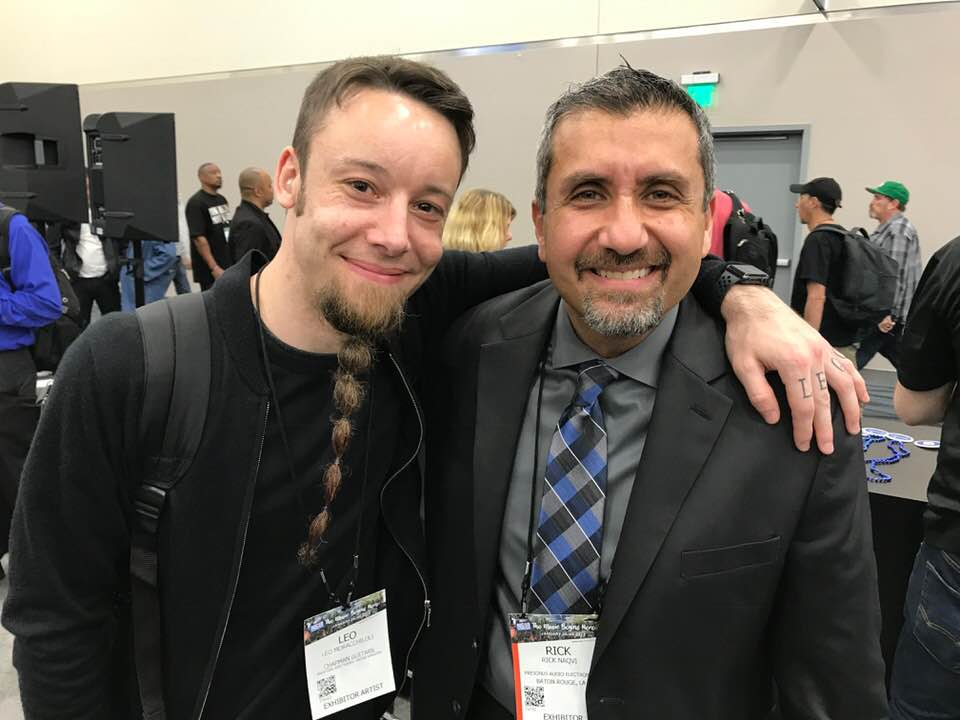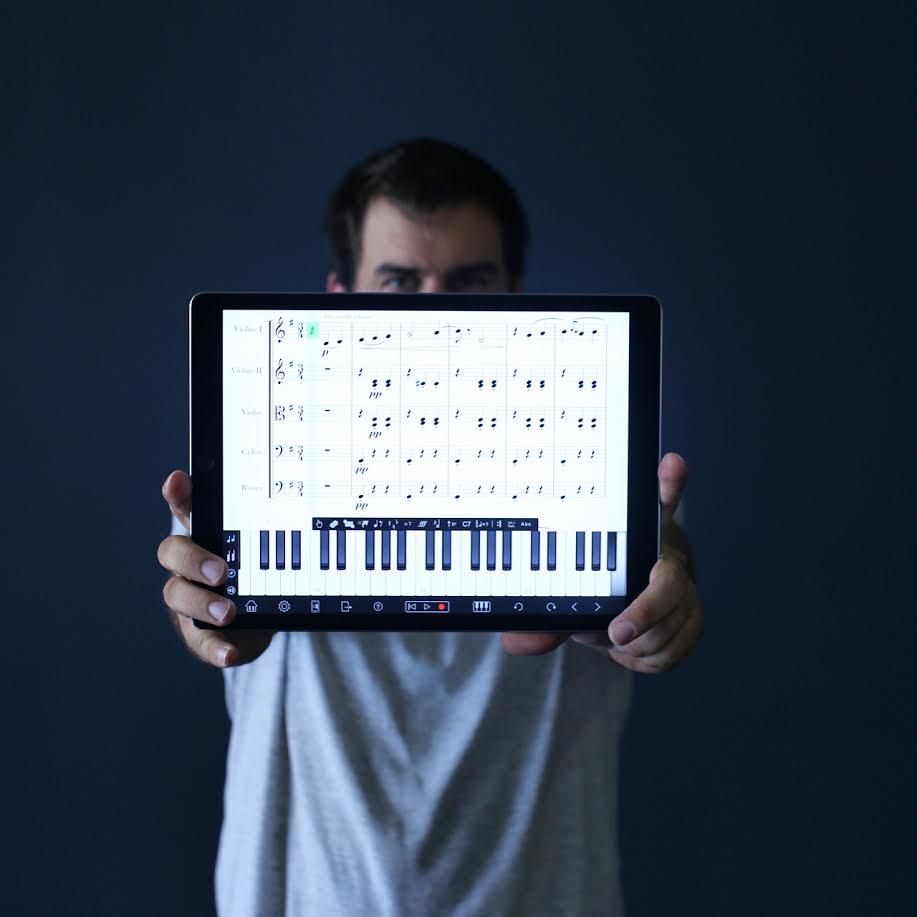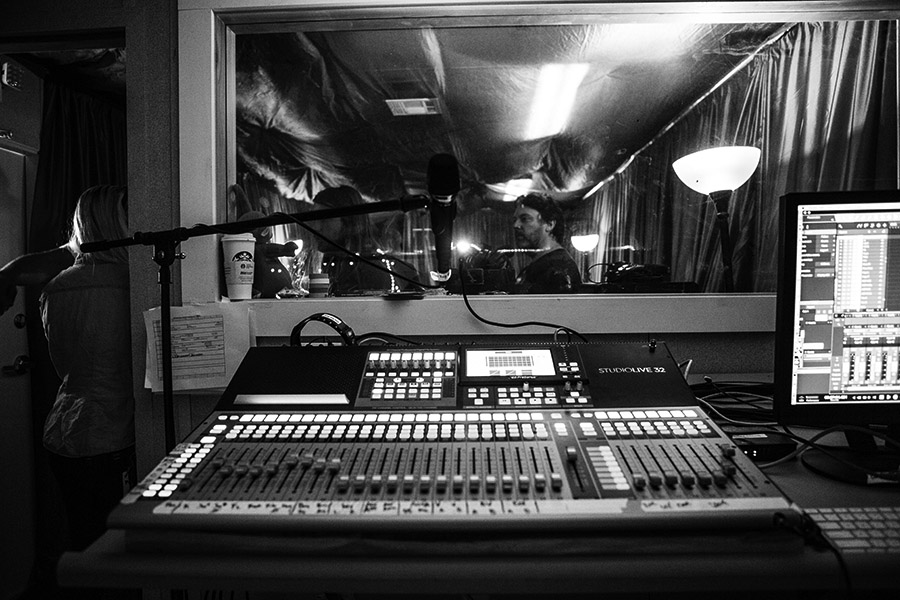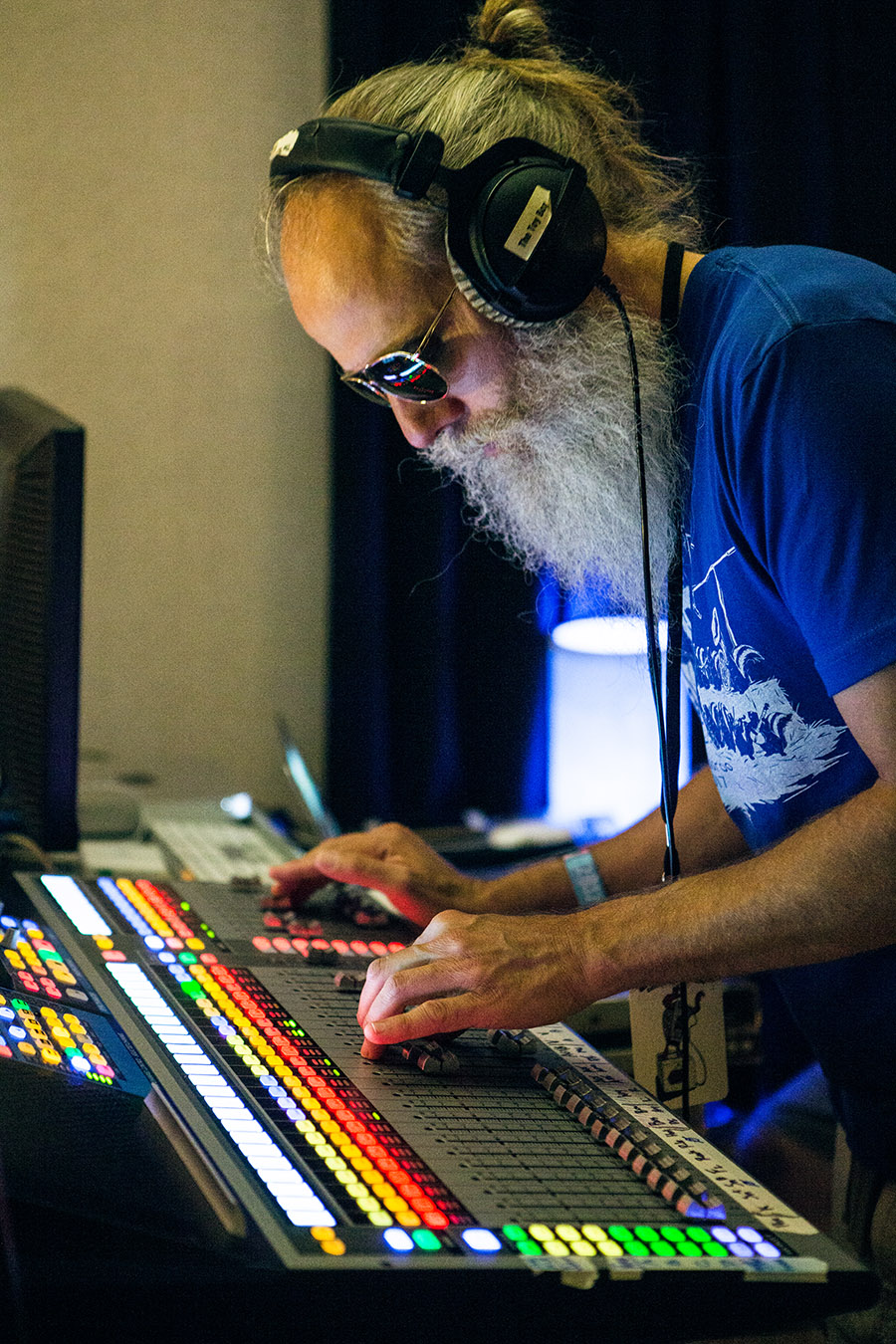Category Archives: Artist
The Latest Banging Add-Ons in the PreSonus Shop!
Get Tom Brechtlein’s Drums HERE!
Did you know the PreSonus family tree has some Irish roots?
St Patrick.
Everyone has heard the story of Saint Patrick—the patron saint that came to Ireland in the AD 400s and converted Ireland to Christianity. Each year on the 17th of March, it appears that everyone has a little bit of Irish in them when St. Patrick’s Day is celebrated! This is especially true here at PreSonus, where we can proudly say we have our own Irish relations based in Co. Cavan where our EMEA office PreSonus Europe Limited is based.
Two well-established Irish bands who have recently started using PreSonus gear are Le Boom and The Lost Brothers. We will be tracking their progress with them over the coming months… but see a quick intro into both bands below.
Le Boom
Le Boom is an indie-electro-house-pop duo based in Dublin, Ireland. They are known for their energetic live performances which feature a frenzy of glass-bottle beats, layered loops, catchy vocal hooks and sweaty fans who dance like no other fans in the world. Their song, “What We Do,” has featured in a number of ad campaigns for TV. According to the US’ Paste Magazine, Le Boom are “Breaking into America in a big way.”
Le Boom use a PreSonus Quantum thunderbolt interface in their live shows and in the studio. Learn more about them at their website.
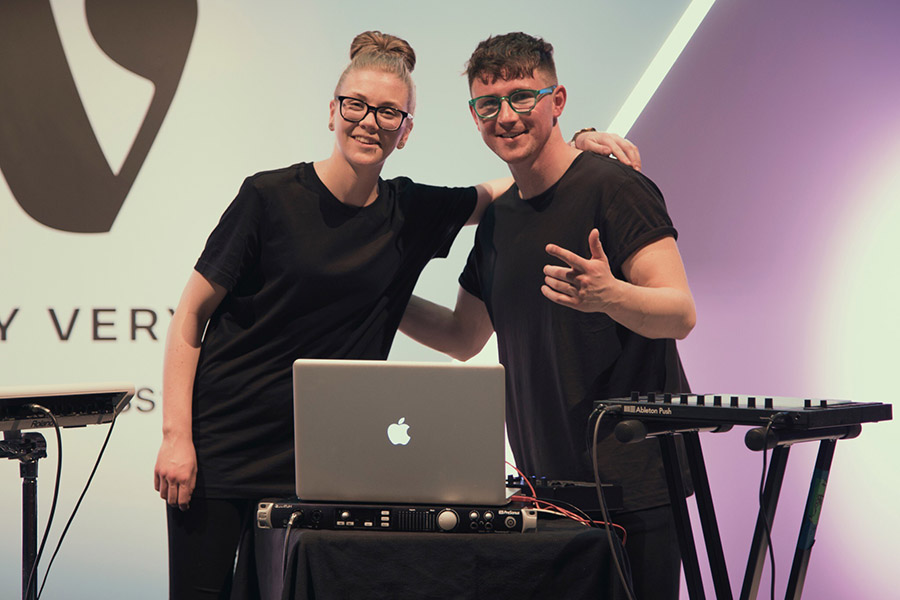
“I recently started using Quantum in our live shows to run my drum samples through VST effects in real time. The lightning-fast latency is essential for this to go smoothly. So far I’ve been really impressed and the drivers have been rock solid.” —Aimie, Le Boom
The Lost Brothers
Irish band The Lost Brothers are Oisin Leech from Meath and Mark Mccausland from Omagh. They have just released their fifth album to huge critical acclaim. In 2018 they tour UK, Ireland, Australia, and the US.
“With emotionally wrenching and confessional songwriting they have the remarkable ability of making a large room feel very intimate indeed. With a masterful blend of careful songwriting and tuneful harmonies, the Lost Brothers make a lasting impact.”
—The Huffington Post (live review)

Oisin of the lost brothers uses a Studio 68 interface to record demos in his home studio and while on the road.
“I just started out using the PreSonus Studio 68 and Studio One to record demos at home. I love the great clear sound from the XMAX preamps, and Studio One’s workflow has been really easy to adapt to.” – Oisin, The Lost Brothers
A Hockey Stick and a StudioLive Leap into a Studio…
The one and only Leo from Frog Leap Studios shares metal covers, tutorials, how-to videos and other fun, super rad stuff with his audience of over 2.3 MILLION subscribers. He’s also a PreSonus user! We recently caught up with Leo at NAMM this year and partnered with him for his next adventure, the StudioLive 32 Series III!
Watch him open and set up his new StudioLive and then make music with a Hockey Stick… yep!
How to Record Drums Underwater
A couple of weeks ago Dominik Scherer posted this amazing video of him drumming live underwater. He used a Studio 192 for the tracking, and an RML16AI and FaderPort 8 for the production. I had never heard or seen anything quite like it, and while the video is plenty interesting on its own, I reached out to Dominik to answer a few more questions about some of the unique challenges when one chooses to record drums aquatically. As if tracking live drums on dry land wasn’t difficult enough…
What microphones were used?
1x DPA 8011 hydrophone, mounted over a rack right at center of the drumset.
What sort of waterproofing was required?
We used acrylic drums and made them water proof. I also got water proof in Ear systems from In Ear Germany.
And we designed light sticks that were waterproof with Rohema Percussion.
Did the drums require any special care/tuning?
We tuned the drums very high and tuned the snares upside down to get a nice snare wire sound. I also used the wires for “scratching” sounds.
What sort of post-processing of the recording was required, if any?
We did some compressing and EQing as also some side chain processing with special delay sounds and room emulations to get a very special and unique sound.
What challenges came up that you didn’t expect?
Well – actually everything was a challenge. First of all I never used oxygen to dive. So I was very afraid of the effect it would have and if I could play with it. Playing underwater is completely different. You gotta plan every movement exactly and do a perfect stroke to hit the drum or the cymbal at the right time. And the pressure under water and the flowing body makes it even harder. As I always do no edits on my videos as far as the drum takes go, I had to play it all as a one take. That was really hard to stay focused, play perfectly and also try to perform in a visually good way… We also did a quite nice making-of video. Click here to watch it on Facebook.
Big thanks to Dominik for making this happen. Some drummers work hard and really go the extra mile… but this is the first time I’ve seen a drummer go an extra nautical mile.
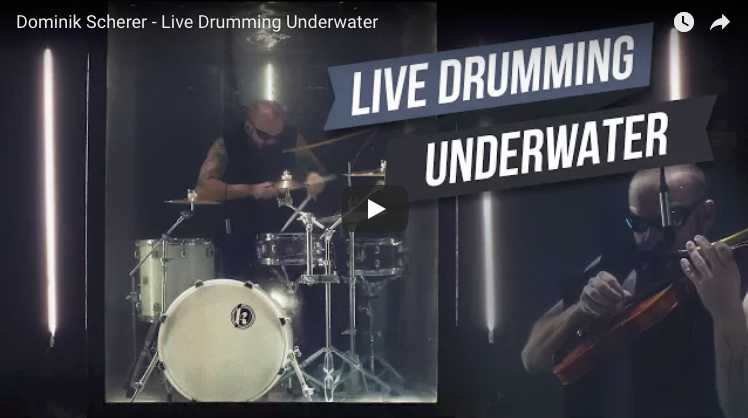
It’s Micah Blouin for #PreSonusFAMFriday
Hopefully today’s #PreSonusFAMFriday feature will teach you a little something…
How long have you worked for PreSonus?
Five years. I started off in Product Management and then moved into Marketing Dept and then Sales and then Education…. Next thing you know, they’ll be asking me to mop the floors.
What was the first 8 track, cassette, CD, digital download you purchased?
What’s your side hustle?
I play drums in a band called Minos the Saint. Maybe you have heard of us… I also am the orchestra director at Istrouma Baptist Church, where I do some drumming, conducting, and arranging (using Notion). I also do a lot of work with soloists and groups in the area, whether it be side-man drumming, engineering, mixing, or producing.
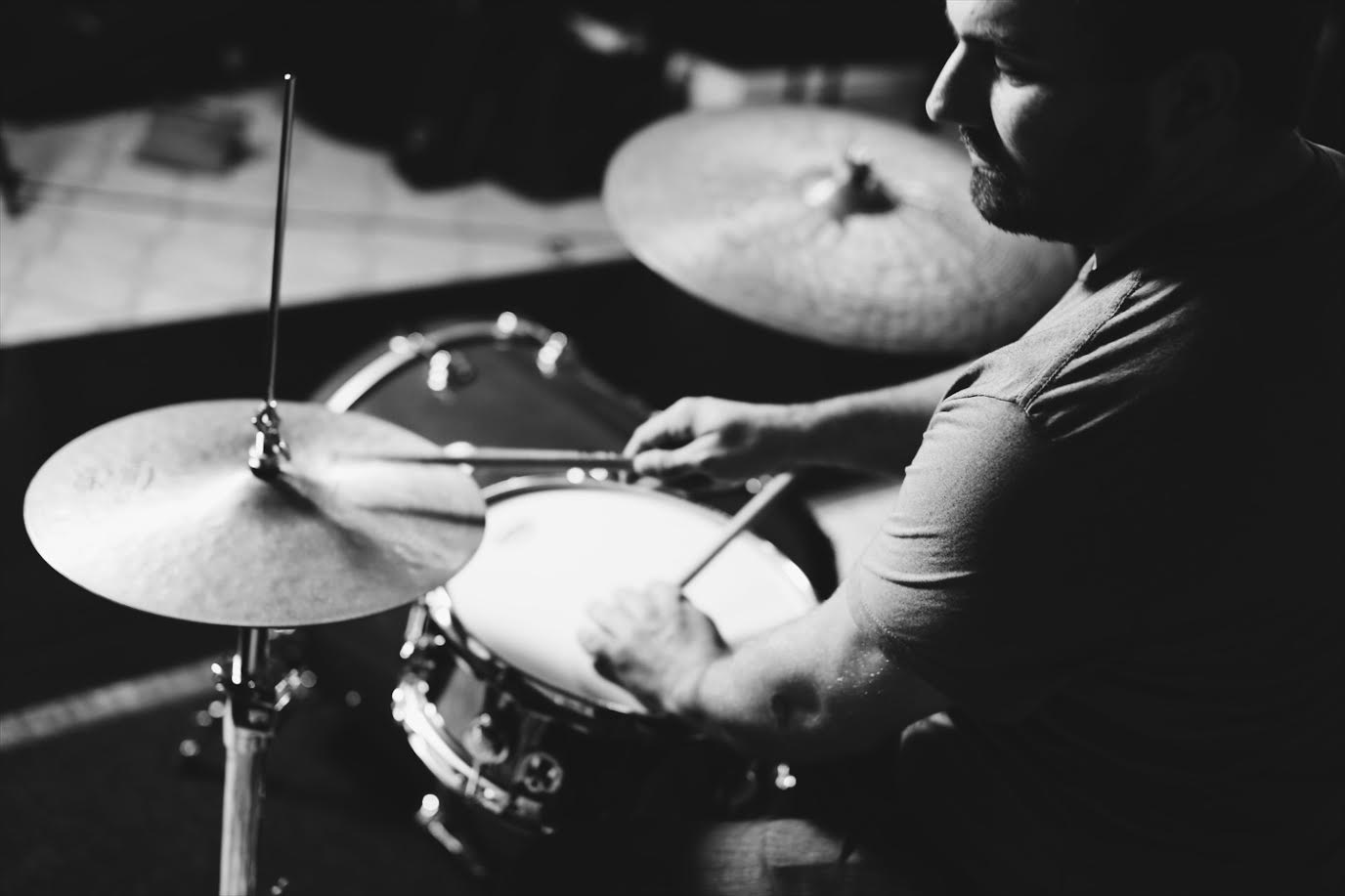
What other products do you have?
All of them…. haha. I use ADL700, ADL600, Studio One, RML32, Studio One remote, Central Station Plus, Temblor 10, Eris 5, Eris 8, Sceptre 8, FaderPort, Air 12.
Why did you choose Notion as your favorite?
As an educator, Notion is the easiest and most fun product to teach others. You can do so much with it and it helps your workflow—more on that later. I like sharing that with others.
Tell us about a successful event you worked.
I attend education conferences year-round and work one-on-one with teachers to find the best solution for their instructional, rehearsal and performance spaces.
What are you currently working on–What’s next for you?
In the summer, music educators and students are involved in many music camps, marching band activities, and Drum & Bugle Corps tours. PreSonus provides the on-the-field reinforcement for The Blue Devils, The Phantom Regiment, Spirit of Atlanta, and many other successful competitive programs. Marching groups these days have significantly more audio technology requirements, whether it be scenes, routing, or remote control. I’m working with them to ensure groups have an easy-to-use, powerful, and flexible solution that fits their needs.
Got some tips?
The power of Notion is in the simplicity of the workflow and the flexibility to use it across multiple devices. The graphic display appears very sleek, but it’s a very powerful notation program, with some surprisingly quick engraving tools. My first tip is to learn the keyboard shortcuts on a computer, which are super intuitive (q=quarter note, d=dot, <=crescendo, #=sharp). On a computer/laptop or iPad, I suggest the handwriting feature, which enables you to write directly on the score with a mouse, finger, stylus or the Apple Pencil.
Anything else you want to share?
Notion is tightly integrated with Studio One. Sometimes, the classical musician in me wants to compose in Notion, then send the score to Studio One (I simply click “Send to Studio One”), where I can then use Studio One to produce tracks around my score. Other times, I’d prefer to write a song on guitar and vocals, and then “Send to Notion” so I can write scoring around my song.
Notion is available at a discounted price for Studio One owners: $49 for Studio One Professional users and $99 for Studio One Artist users.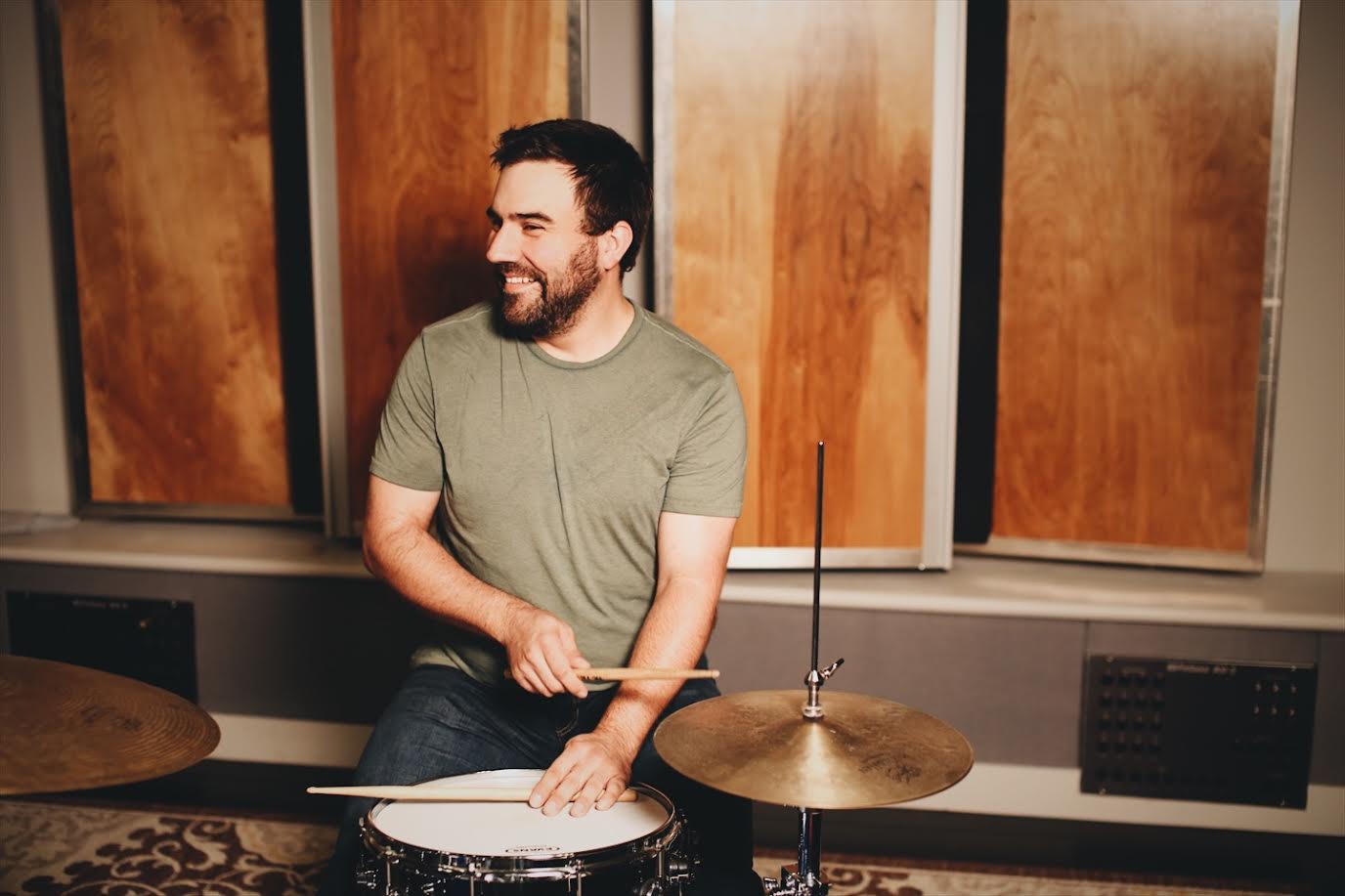
Click here for more info and to purchase Notion!
Butcher Babies and the StudioLive CS18AI and RM32AI at Ozzfest Meets Knotfest in 2016!
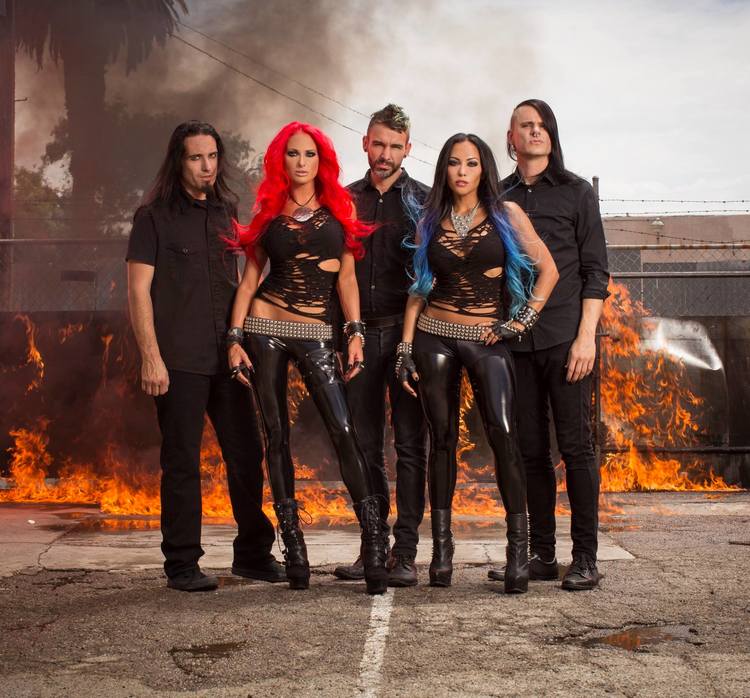 Watch!
Watch!
Jason Klein, bassist of the Butcher Babies, tells us about how the band is using the PreSonus CS18AI & RM32AI systems for both their in-ear monitoring system as well as multi-track recording of their live shows via Capture and Studio One—all happening at Ozzfest Meets Knotfest 2016.
Learn more about the StudioLive Mix Systems here!
Follow Butcher Babies on Facebook!
Follow Butcher Babies on Twitter!
Follow Butcher Babies on Instagram!
Hay Bale Studio Relies on StudioLive 32 and Studio One at Bonnaroo
Most of time, you can find Elijah “Lij” Shaw at his Toy Box Studios in Nashville,
where the Grammy Award winner engineers and produces projects in a wide variety of musical genres. But every year, when the Bonnaroo Music and Arts Festival rolls around, Shaw and his team decamp for Manchester, home of the festival. There, behind the main stage, they soundproof their double-wide mobile recording trailer with 500 hay bales.
In this once-a-year Hay Bale Studio at Brigadoon—er, Bonnaroo—Shaw and his team record dozens of bands that will appear at the festival. The performances are fed to more than 40 radio markets around the USA.
For the 2017 Bonnaroo, Hay Bale Studio offered more capabilities than ever before, as Shaw mixed on the new PreSonus StudioLive 32 Series III digital console/recorder, while his team captured the tracks and main mix in PreSonus’ popular Studio One 3 Professional DAW.
“The StudioLive 32 allowed us to bring in all 24 inputs from the recording floor, so we could record a full band. We’re recording in multitrack to Studio One using the console’s AVB audio interface, which can send and return up to 55 streams over one CAT5 Ethernet cable,” says Shaw.
Shaw mixes live while the band is performing, a job made much easier by the StudioLive 32 Fat Channel signal-processing section’s customizable user interface. “I’ve got compressors and EQ on every channel,” Shaw specifies, “and the customizable Fat Channel lets me create my own layout so I can quickly access the processing I want when mixing. I can bring in four onboard effects processors for reverb and delay, and I also patch in my outboard spring reverb. I use Tap Tempo on the mixer to ensure the timing of the delay effects works with what the band is playing.”
PreSonus’ FlexMix feature also has proven useful. “I choose a FlexMix, and the entire mixer configuration changes and shows me what’s going on with that FlexMix,” instructs Shaw. Using the StudioLive 32’s aux sends, Shaw and team send four custom headphone cue mixes. “We send the cue mixes to the PreSonus HP4, which is a great, simple 4-channel headphone box that is really loud,” he avers. “We have two people with iPads running UC Surface software to control the monitor mixes.”
Main engineer Michael Hardesty also is equipped with UC Surface but he’s running it on a laptop. “Anything Lij can do on the mixer, I can do just as well in the software. My main goal is to set preamps and compressors and do the gain staging so I can get the multitrack feeds recorded properly in Studio One. I am also taking a print of the mix but generally I’m working with individual tracks. I also help with headphone mixes,” Hardesty observes.
With UC Surface, it’s possible to control the mixer from multiple devices at the same time. “That means you can give people different responsibilities,” Hardesty explains. “You also can lock out functions on particular devices; the iPad guys on the recording floor can only control the aux sends for the headphone mixes, while my laptop has complete control of the StudioLive 32.”
The live stereo mix goes straight to mastering engineer Joe Hutchinson. “Joe makes the radio mix sound fantastic,” enthuses Shaw. “He also uses Studio One to capture the performance in stereo. So we’re capturing bands through the StudioLive 32, mixing and mastering, and putting it out to more than 40 radio markets—all within an hour of each performance, with two or three songs for each band every hour.”

Thanks to the feature-packed, versatile StudioLive 32 and the power and speed of Studio One, Hay Bale Studio had entirely new capabilities at the 2017 Bonnaroo. “The customizable mixing surface, plenty of processing, wireless remote control, recording features, and ease of use let us do things we could never do at a dozen previous Bonnaroos,” confirms Shaw, “and it all sounded great. “We loved using the StudioLive 32, and we’re very happy with Studio One. Bonnaroo is a highlight of our year, and PreSonus helped make it extra special this year. We hope you’ll visit our site and check out some of the recordings!”
Watch Lij demo and show off their StudioLive 32 here:
For more information about Hay Bale Studio, please visit www.thetoyboxstudio.com/haybalestudio
Listen to their latest podcast from Bonnaroo HERE!
For more information about PreSonus, the StudioLive 32 console/recorder, Studio One 3 DAW, and the HD4 headphone amplifier, please visit www.presonus.com.
Photography provided by Anthony Matula with MA2LA Design.
Introducing Adam Brandon for #PreSonusFAMFriday
Fridays are awesome…
It’s the start of the weekend and everyone is in a good mood. Every other Friday is a payday, so there’s money in the bank… and it’s #PreSonusFAMFriday where we introduce you to an employee who’s also a PreSonus fan and user. Catch up on who you’ve missed so far on Instagram and check out today’s featured employee, Adam Brandon! He has two first names and loves audio stuff like his StudioLive RML32AI! Check out his quick interview below!
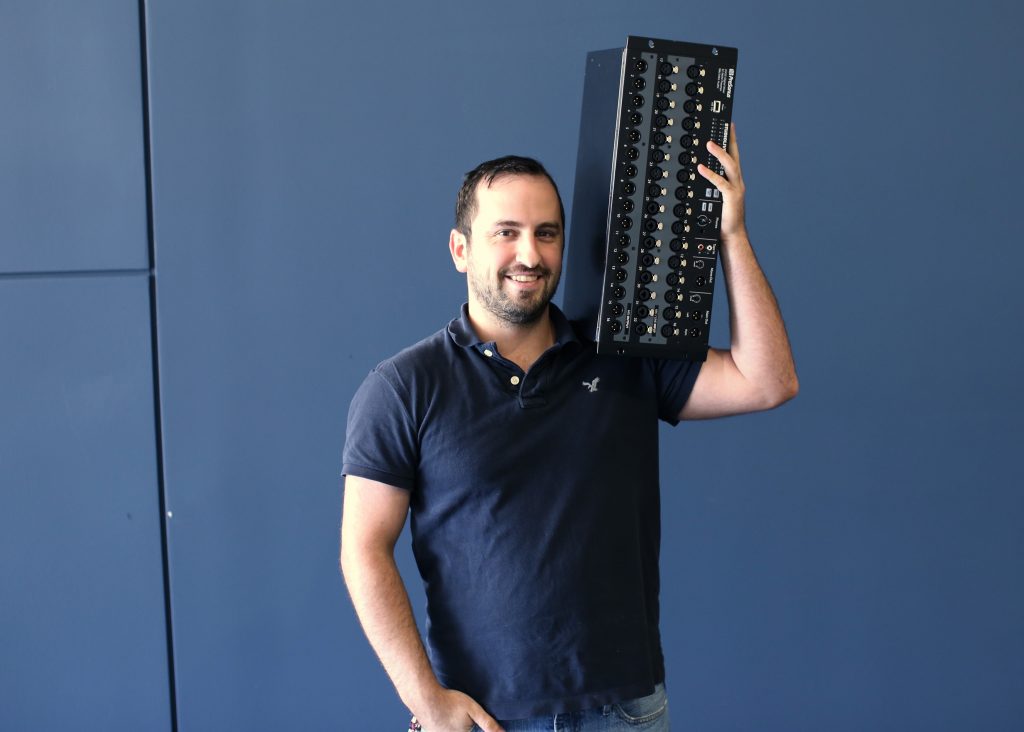
- How long have you worked for PreSonus?
I’ve worked 6 years in July.
- What’s your official job title?
- What’s your favorite thing about your job?
There is nothing better than helping someone get a system up and running and learning that we both are addicted to the same things – mixing audio and making music.
- What was the first 8 track, cassette, CD, digital download you purchased?
Metallica “Reloaded” (CD)
- Everyone has a side job, what’s yours?
I own a sound/lighting company and do live sound, design/installation, and optimizations.
- What do you love about the StudioLive RML?
It fits so well in so many situations, that all I do is get a router, a Firewire cable and my Mac/iPad. Couldn’t be easier.
- What other products do you have?
I have a StudioLive Series III 32 and 16 in my live sound inventory and love them.
- Tell us about a successful event you worked.
- What are you currently working on?
- What’s next for you?
Planning to expand my business and continue to serve our PreSonus Customers as best I can.
- Got some tips you wanna share?
Nikola Jeremic on Composing for Starpoint Gemini Warlords in Studio One
[Nikola Jeremic is a longtime PreSonus user, fan, and all-around good friend to the company. He’s written outstanding blog pieces for us in the past, and this is no exception! Today he sheds some light on the oft-misunderstood process of music and audio for computer games, in particular, the just-released science fiction epic “Starpoint Gemini Warlords.”]
How is doing music for games different than doing music for film or TV? What features in Studio One make it particularly well-suited for this application? 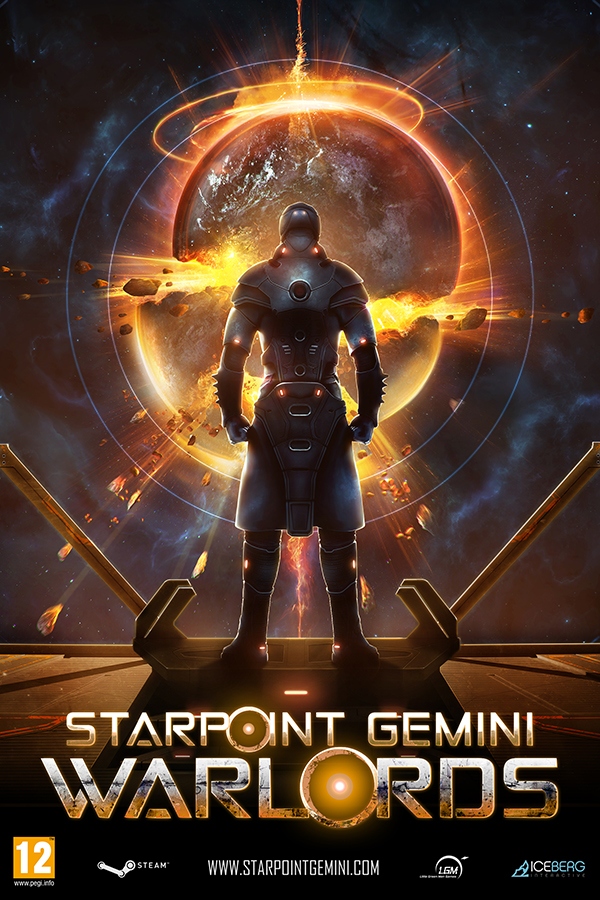
Doing music for games is technically a completely different process than composing for film or TV, because the music in video games is non-linear and interactive, unlike on films and TV. When you compose a cue for film or TV series, you are limited to the timeline of that particular scene, and you have to sync everything to fit in that particular timeline. In the game, the music needs to follow the decisions of the player and fit itself to the various situations the players will get into. That is why I compose a cue for a game in segments. In other words, I create a piece of music that can be divided into looped 8-16 bars parts that can be interchanged inside the audio middleware and each cue has a short ending stinger that can be triggered at any point to end the music cue. This idea is best applied to big action sequences and boss fights. When it comes to ambient atmospheric music, it’s fairly similar, but sometimes it’s not needed to be looped, and you can just transition from one ambient track to another, because I usually compose them in the same key, or I at least make them start and end on the same note for easier transition. That’s the approach I used for Starpoint Gemini Warlords for example.
You’ve been using Studio One for a long time. What are some of the more recent features that you found yourself using during the scoring of Starpoint Gemini Warlords?
Scratch Pads are hands down THE BEST idea ever! I love having the option of being free to experiment and change the arrangement of a cue in a single project that’s opened. It is very useful when I want to create different versions of one track to test how it sounds in different variations. I also love the fact that no matter how many scratch pads you have opened, everything is mixed in the same mix window, so I can bounce different versions very easily and quickly send them off to the developer for listening. I have to say that Studio One Mixer is absolutely the finest and probably the most respected mixing engine out there today. I have a lot of DAWs that I use for composing when collaborating with other people on projects, but I ALWAYS mix my tracks in Studio One. Project page is also awesome, especially when I need to deliver a big amount of mastered tracks to a client and I need to make sure they all sound the same and have the same levels. It’s just amazing, and the fact that I can quickly take care of meta-tags and add album art cover is really cool. The official soundtrack for Starpoint Gemini Warlords is being prepared in Project page, and it makes my life a whole lot easier. I also love the fact that it has all the needed metering in a single window, so I don’t have to load other plugins and use up my CPU. Bouncing in place and converting tracks in project pool is also a feature I use a lot. Creating FX chains with various plugins has made my mixing and sound designing process lightspeed faster, because I can always recall a preset I have created and use it over and over again no matter what plugins I have in the chain. Mojito is still my favorite go-to synth for bass lines. I generally love the sleek and clean look of Studio One interface and its plugins, because it makes my job a lost faster and easier to do without the need to think about “ooh what does this button do?” or spend a lot of time in sub-menus to find the option I need.
Do you use the Notion integration?
Yes I do. Not always, but I most of the time when I am working on piano and orchestral pieces, I always check my score sheet with Notion. What I’d love to see in the future is having Notion editor as an actual part of Studio One Pro. For example, when you open up a midi editor, you can also switch to Notion editor in the same window and tweak the notes on the staff.
Does your score consist of recordings of live instruments or are you using virtual instruments exclusively? If so, which ones?
The score for Starpoint Gemini Warlords consists of both virtual and live instruments. All of the guitar and bass parts are recorded via my FireStudio Project interface, and I also recorded my external hardware synths through FireStudio. This is mostly synth-oriented soundtrack that pays the homage to some of our favorite games and sci-fi franchises. My main synths here were my hardware synths Yamaha DX7 and KORG Volca Bass and Volca Keys, and all of them were processed through my guitar pedals, but regarding the software synths, I used Arturia V collection (mostly MiniMoog V, CS-80 V, ARP 2600 V, and Modular V) and U-He Zebra 2. I also used Mojito for basses and Mai Tai for some pad and drone sounds that were later processed via different FX plugins.
As Starpoint Gemini Warlords is clearly a Space Opera of sorts, do you take any inspiration from John Williams’ use of leitmotif in Star Wars? Any other musical influences you’d care to talk about?
What I love about Little Green Men studio (the developers of the game) is that it’s a group of fanboys and fangirls and it was a lot of fun at brainstorming meetings regarding the soundtrack for the game. Everybody was into sci-fi music and everyone has their own favorite franchises, so I had to do a lot of research and take a listen of various sci-fi game and film soundtracks. There were no traditional leitmotifs for characters, instead we decided to represent each sector in the game with a different melodic theme based on what usually goes down there, so for example more friendly sectors have some light evocative music, alien sectors are more mysterious and feature elven type of vocals and exotic woodwind instruments, while pirate and outlaw sectors are very dark and aggressive in sounds. The biggest inspiration came from video game soundtracks such as Homeworld, EvE Online (I’d love to score that one in the future), Mass Effect, Deus Ex The Human Revolution, and Battlestar Galactica TV series.
Any advice to share for musicians and producers who want to get into game audio or music but don’t know where to start? 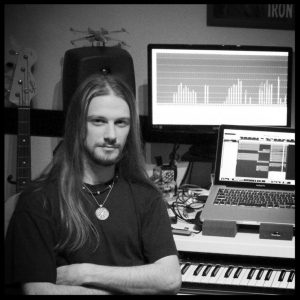
First thing I suggest you do is to join audio societies such as AES (Audio Engineering Society), G.A.N.G. (Game Audio Network Guild), and visit conferences such as GDC (Game Developers Conference) and GamesoundCon. You will meet a lot of people from the industry, and they will all be more than happy to share knowledge and forward you to other people as well. Read books on game audio from publishers like Focal Press for example, I know that helped me a lot. You can always look for some smaller mobile gaming developers out there in your local communities and get in touch with them as well. And the most important thing of all is to learn your craft and learn it good. Don’t get overwhelmed by this or that plugin that’s newest on the market or whatever. Get a set of tools that you like and learn them well inside and out. You will be amazed by how easily you can get great results with bundled plugins that come with your DAW. I still use my Studio One Pro EQ and Compressor most of the time for sampled stuff. Create your own sounds from the stuff that you have. A developer will always learn to appreciate more the fact that you took your sweet time to create something original that’s only for them, than sending them something created with commercial instruments libraries that everyone uses.
Links:
James F. Reynolds on Studio One
[This just in from James F. Reynolds, pop and dance music’s “secret weapon.” He has mixed and produced a wide range of acts including Ellie Goulding, Emeli Sande, Years and Years, Tinie Tempah, and The Saturdays. Last year he made the switch to Studio One and was kind enough to share his insights with us.]
• For what applications are you using Studio One Pro? (Example: for recording, composing, sound design, and so on; in a commercial studio, project studio, for live recording, etc.)
I use Studio One 3 Professional for mixing, production, and recording.
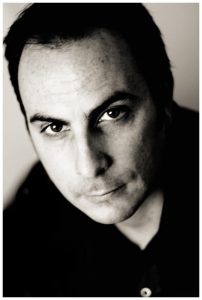
James F. Reynolds
• What led you to choose Studio One? Was it the company’s reputation, audio quality, ease of use, specific features, price, other factors?
I spent many years using a combination of Logic, Pro Tools, and Ableton Live, as they all have strengths in different areas. I had been searching for a while for a DAW that has the best of all these platforms, for example:
- The creative speed of Ableton
- The accuracy and mixing ability of Pro Tools
- The lay out and ease of use of Logic.
Last year I had quite a few producers in my studio talking about Studio One and decided to investigate further. After taking some time to get to know the program, it became apparent that this was a program that has been thought out really well and ticks the box of being a one stop shop for mixing/production and writing.
• Having used Studio One, what do you like most about it?
I have used it consistently for 5 months now and it has sped up my mixing and overall workflow. One of the best features is being able to set up a series of commands using Macros. It’s also very stable.
• What Studio One features have proven particularly useful and why?
The arranger track is very handy, as often when I am mixing a song, the label wants extended versions. The Arranger and also to try out different structures within the arrangement. This is very easy to do using the arranger as it can copy any section with all the automation related to it.
• Any user tips or tricks or interesting stories based on your experience with Studio One?
My tip is this: if you are trying Studio One out, stick with it. It’s always very difficult switching from a platform that you use day in day out for many years as everything is second nature. It takes a while to get back to this speed on a new platform but if you persevere it pays off !
• Please give me some basic background info on your career and current projects, credits, and so on.
I am mainly known as a mixer. I am currently mixing Emeli Sande and before that was mixing Ellie Goulding “Still falling for you” (U.S.A radio mix) and Kelly Clarkson. I also mix for a K Pop band called B.T.S who’s album last year broke records. I co wrote “Drinking from the bottle” with Mark Knight and Calvin Harris and Tinie Tempah. For more info, check out www.jamesfreynoldsmixing.com
• Any final comments about PreSonus and Studio One?
I am really excited about the future of Studio One and have been really encouraged by a development team that actually take on board feedback from mixers and producers and often implement ideas if they are good. This was a big frustration with other DAWs, as feedback was not listened to or acted on.

